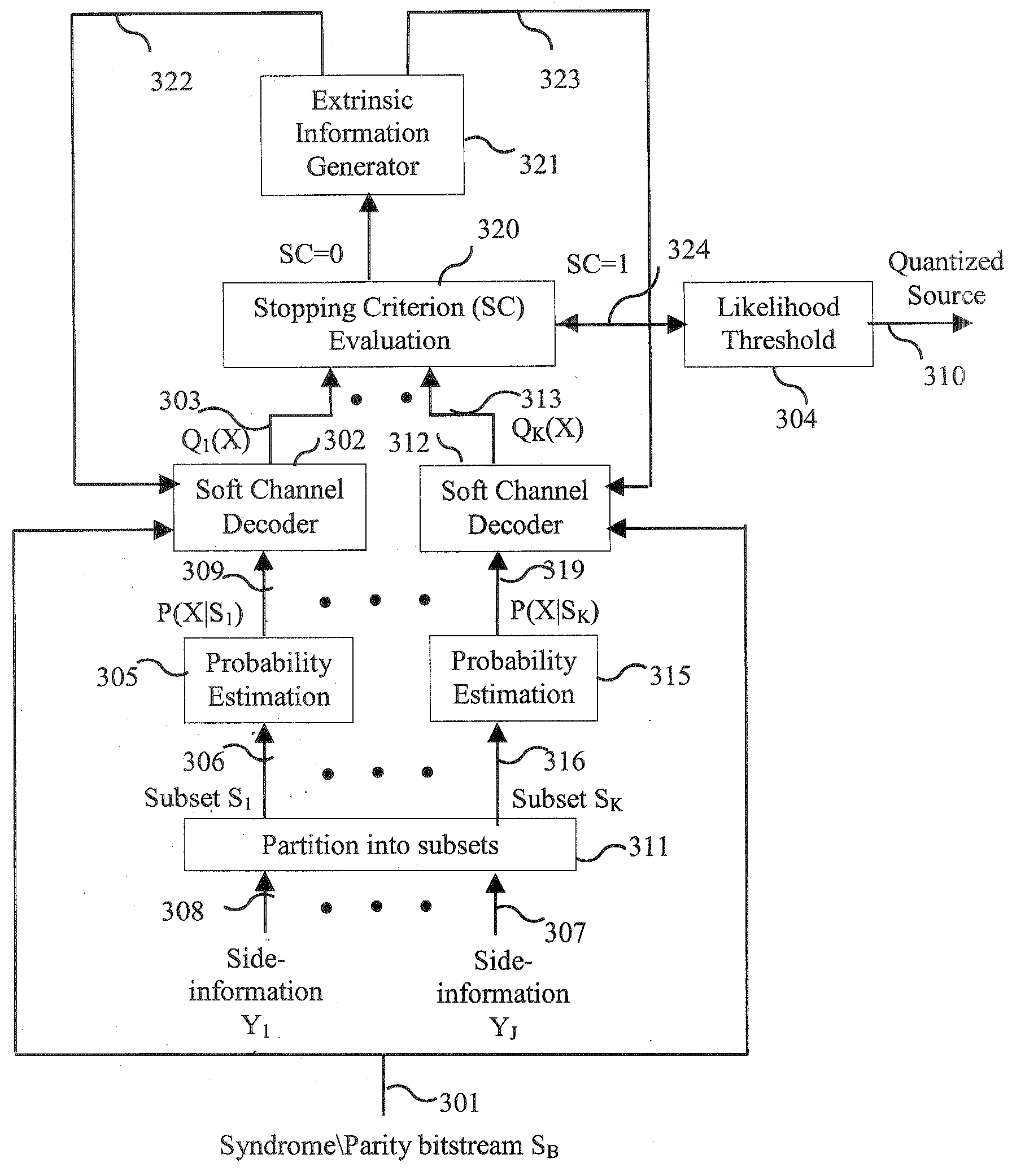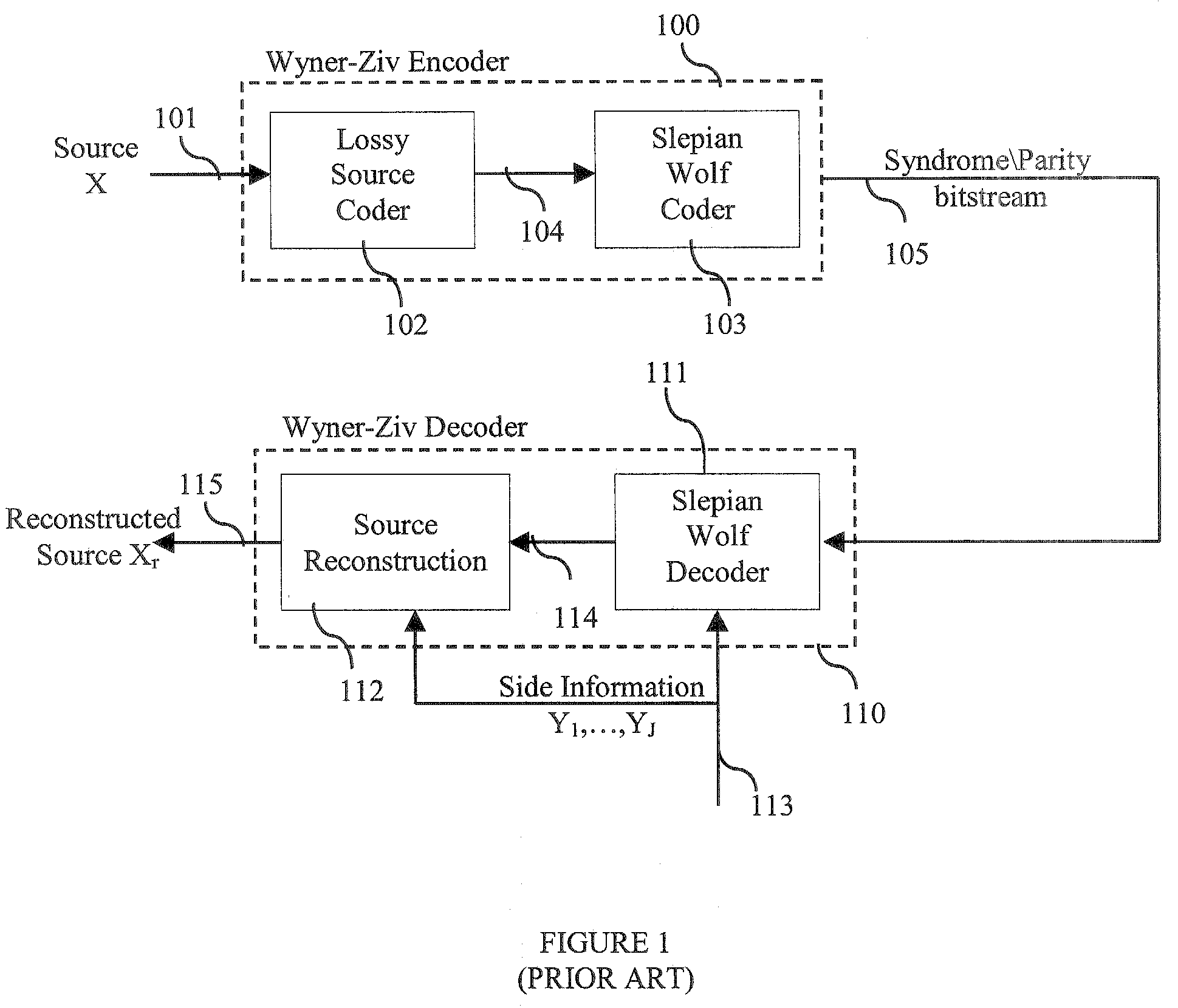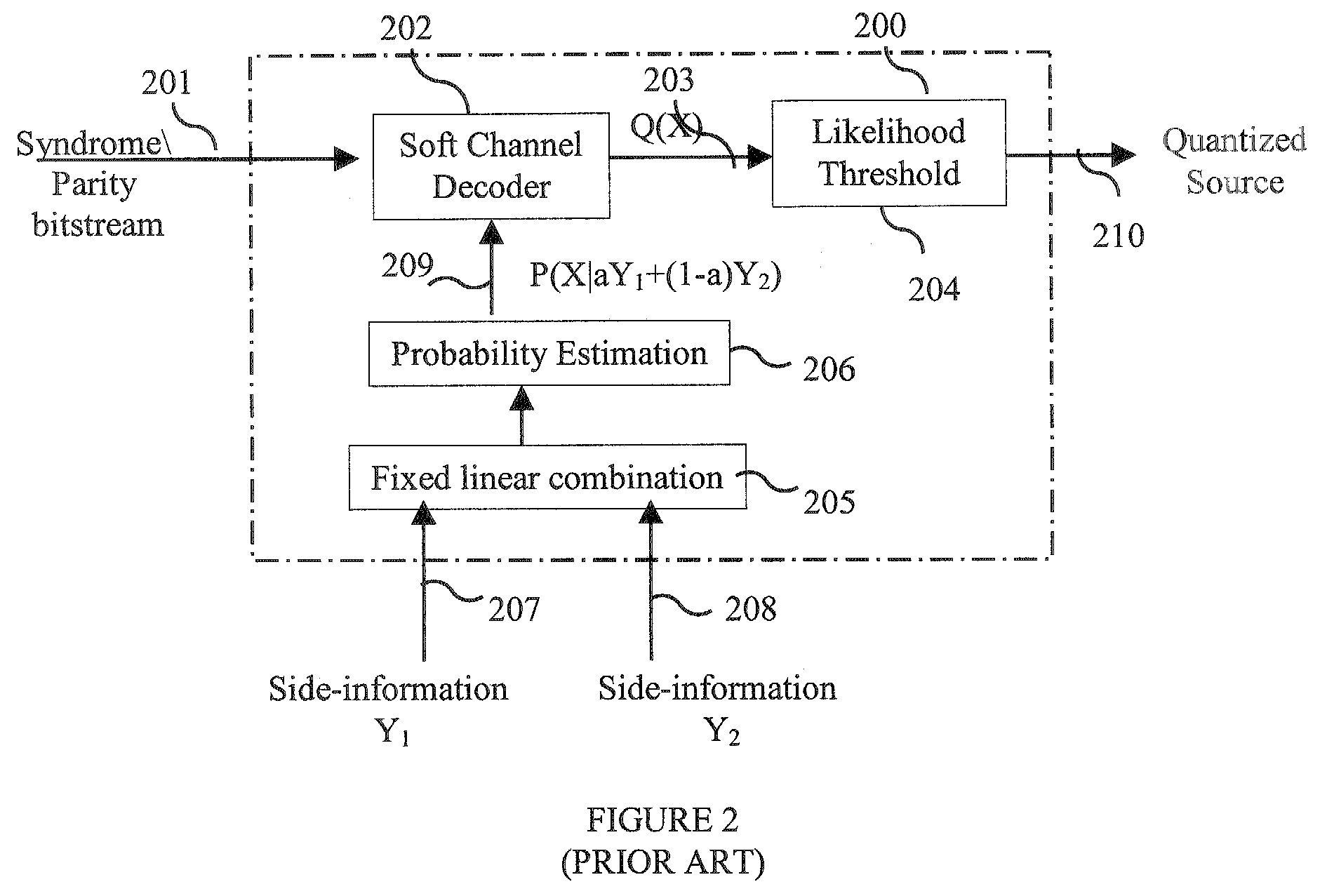Method and Apparatus for Multi-Hypothesis Decoder Side-Information Coding
a decoder and side information technology, applied in the field of decompression in data compression systems with decoder side information, can solve the problems of poor compression performance, inefficient syndrome/parity bitstream rate needed for slepian-wolf coding to occur without failure, and inability to decode side information
- Summary
- Abstract
- Description
- Claims
- Application Information
AI Technical Summary
Benefits of technology
Problems solved by technology
Method used
Image
Examples
Embodiment Construction
[0018]Embodiments of the present invention disclosure herein are intended to be illustrative only, since numerous modifications and variations therein will be apparent to those of ordinary skill in the art. In reference to the drawings, like numbers will indicate like parts continuously throughout the views.
[0019]Referring to FIG. 3, an exemplary embodiment of the present invention a system for multi-hypothesis Slepian-Wolf decoding within a Wyner-ziv decoder receives inputs comprising a syndrome / parity bitstream 301 received from a Wyner-Ziv encoder, and side-information signals Y1, . . . ,YJ (307, 308). The syndrome / parity bitstream 301 includes a plurality of indices drawn from the set of integers or a Galois field. The set of side-information signals is artitioned into K subsets by a partitioner 311. Each of the K subsets is passed through a probability estimator, which may include first and second probability estimators 305 and 315, respectively. The subset S1 306 is passed thr...
PUM
 Login to View More
Login to View More Abstract
Description
Claims
Application Information
 Login to View More
Login to View More - R&D
- Intellectual Property
- Life Sciences
- Materials
- Tech Scout
- Unparalleled Data Quality
- Higher Quality Content
- 60% Fewer Hallucinations
Browse by: Latest US Patents, China's latest patents, Technical Efficacy Thesaurus, Application Domain, Technology Topic, Popular Technical Reports.
© 2025 PatSnap. All rights reserved.Legal|Privacy policy|Modern Slavery Act Transparency Statement|Sitemap|About US| Contact US: help@patsnap.com



